#Loire lore
Explore tagged Tumblr posts
Text
You know that moment where you tell your friend that you want to date their brother
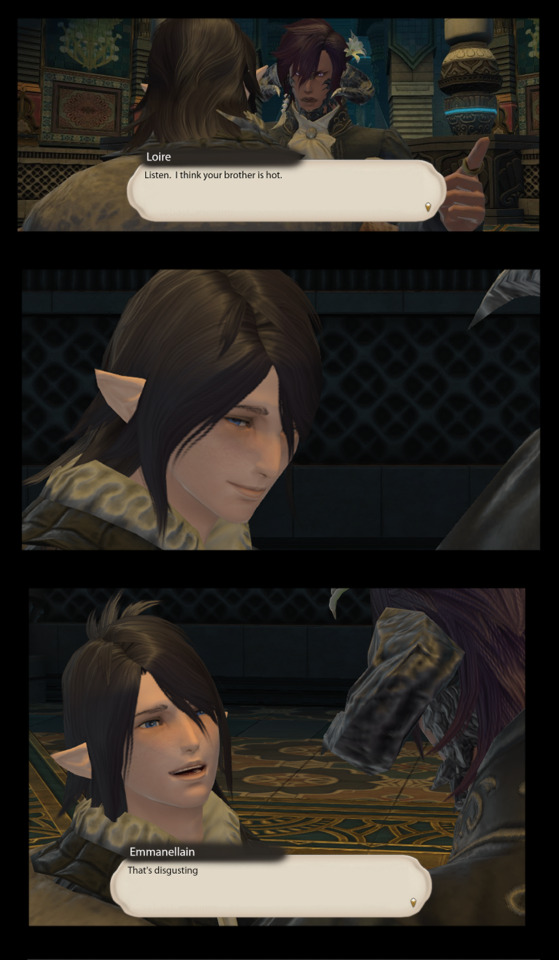
They laughed this off and arranged a date later.
#FFXIV#Loire Ejinn#FF14#emmanellain de fortemps#wol x haurchefant#Loire lore#Loire's backstory is kind of silly#he's a weaver from ul'dah so he met Emma first#and after a few commissions#he got to make a few suits for the family#of course he gets charmed by the middle son right off the bat
26 notes
·
View notes
Text
Okay I'm gonna do it.
I'm going to buckle down and write Loire's backstory fic.
3 notes
·
View notes
Text
some mtp drawings i did while on vacation; i did most of these on an airplane or in a moving car, so

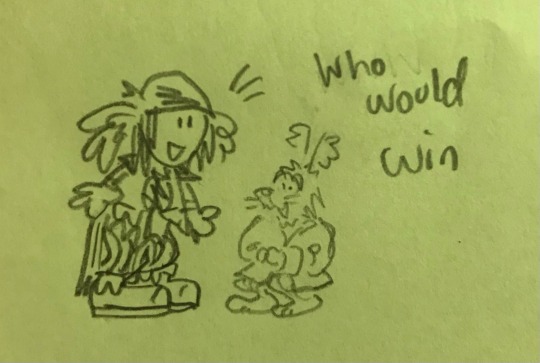


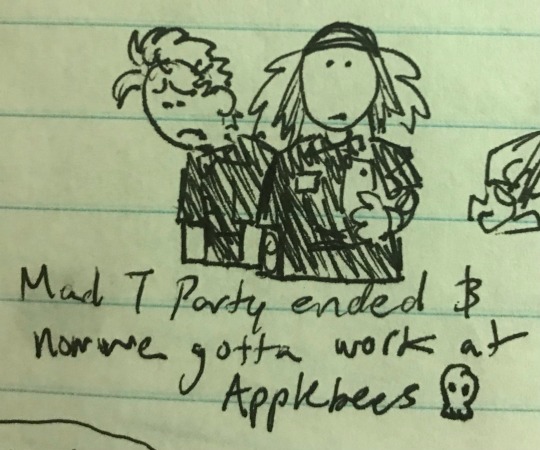



#i also have normal drawings i did but i like these ones more hahaha#alice in wonderland#mad t party#my art#theres a hc that mallys last name is “loir”#which (because im not french) i originally pronounced it “lore”#my sibling called him mallymkun fnaf lore one time and its like a running joke we have#im very much of the idea that chessur and mally have a lot in common#but they dont like to acknowledge or admit it
9 notes
·
View notes
Text
LOL oh my god its so wild, so I've had my sn "Bur Loire" since middle school and trust me when I say that was a Very Long time ago. So when access to the internet in school was new me and my group of friends in 6th grade were introduced to fanfiction.net and "self insert" fics, so of course our little soft-sponge-like brains were like oh we want in! We used to have this little folder of printed out photos of like Inuyasha and Sailor Moon characters and we'd write comments on the pictures or write on the little story pages and pass them around between classes. Anyway! One of our friends was on a website that claimed to "write your name in japanese kanji" and provided a pronunciation guide of sorts. I'm sure it was 10000% inaccurate but hey we were kids what do we know. Anyway we all put our names in and the friend was like "Oh in Japan they take the first 3 letters of their names and add '-chan' to it as a nickname" [LOL ok] For some reason we all took what the pronunciation guide had. So, for my real human name pronounced via japanese kanji according to a very clearly inaccurate website was "Bur" Also, I had been getting all my friends to play Final Fantasy VIII at the time and we started a little self-insert fic thing in our folder and we decided we were all going to take the last name of our favorite character. Obviously, mine is Laguna Loire, so taa daaa.
And that's been me ever since. It's very much core to who I am, as someone who struggled with their real name growing up (my mom cursed me with a traditionally man's name when I am very much a female and will always be), I have friends I've known for 20+ years that call me 'Bur' over my legal name. And I wouldn't have it any other way :)
Username Origin Tag
I was tagged by @galacticsparkles , whom I had always associated with Sailor Galaxia, but no! (My first fandom is showing...)
So, Sailor Moon was my first major fandom, and I adore the Amazoness Quartet / Sailor Quartet. Only, in the English dub at the time, their name dropped the -ess and were just the Amazon Quartet.




I was also just starting my own Sailor Moon OC fanfic website, "Tower of Time: Otaku Senshi," and I needed a "cooler" pseudo character name to be a "Guardian" of the Tower of Time.
So, my OC persona is the fifth member of the Amazon Quintet, but in a sad bit of history, she had her dream mirror smashed and she died before she could make it to the canon story line.
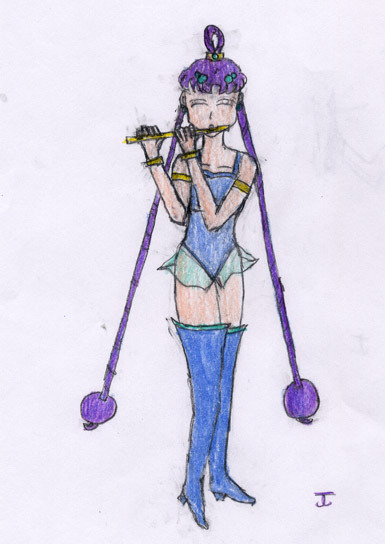
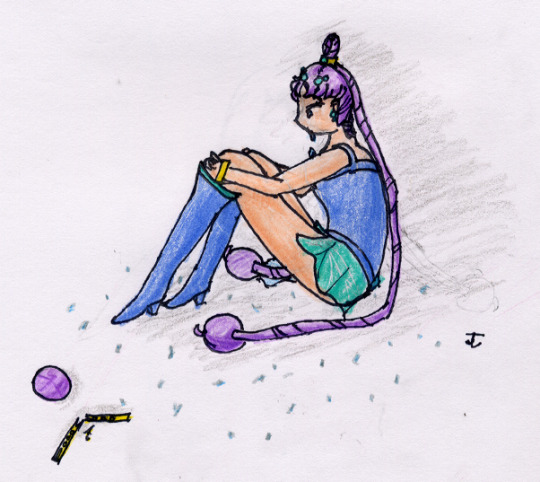
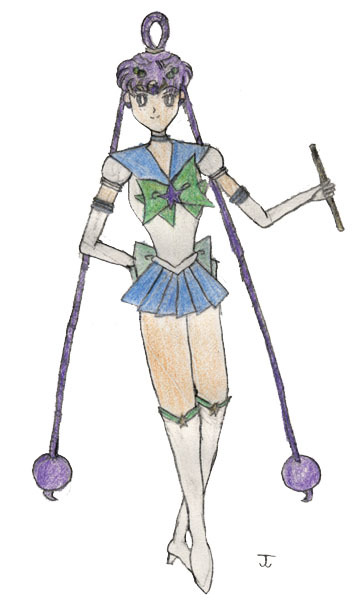
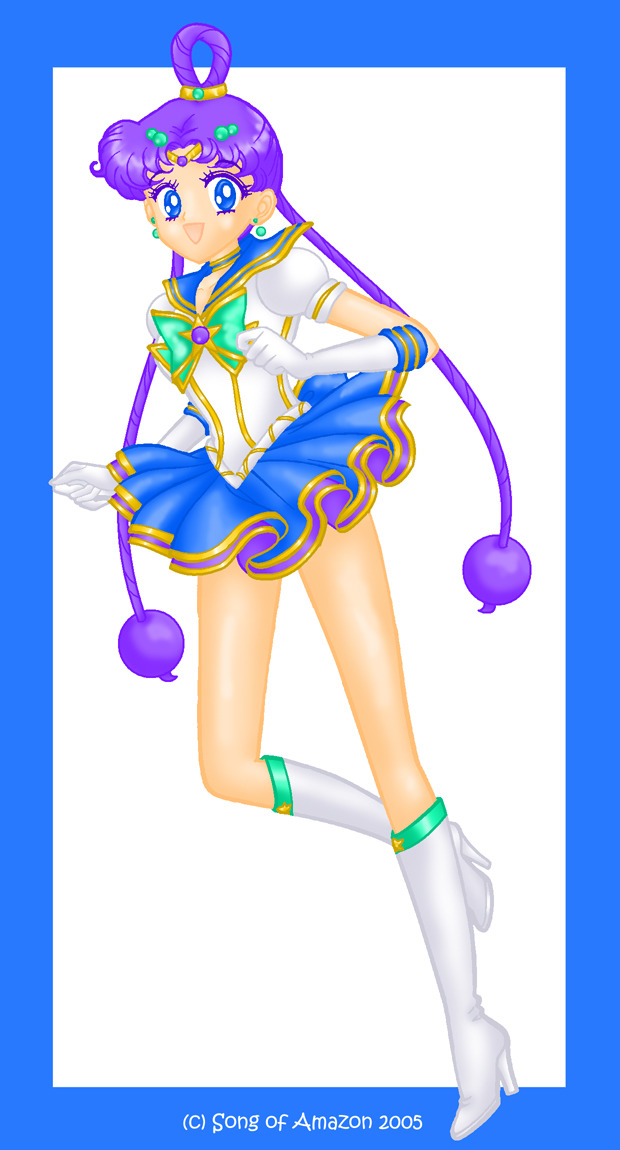
Her name is ApolApol, or Sailor Apollos, and she was the musician of the group, and thus, the Song of the Amazon(ess) Quintet, which brings us to Song of Amazon.
So that's my extremely oblique Sailor Moon reference in a username.
Someday I want to cosplay Sailor Apollos.
So, tagging if you want and haven't already: @dianapocalypse @burloire @jateshi @galadrieljones @tarasmom
19 notes
·
View notes
Text
Nostalgia Unknown | Chapter 3: Vignettes
[3,724 Words]
Chapter Summary:
The feeling of that ghost and its happy haunting was infrequent but strong when it overcame her. It could be distracting and always shifted her grip on reality, just a little. She wondered, many times, if she should mention this to her doctor, but… it was just this one, occasional feeling. Nothing visual or auditory. Just a sense. It seemed too inconsequential to mention. Or, at least, that was what she told herself.
Happy I pumped out a few chapters during my sickness-induced writing retreat! I have a little of a backlog to post. :)
More about Nostalgia Unknown under the cut.
Relationships: Laguna Loire/Raine Loire, Raine Loire & Squall Leonhart, Squall Leonhart & Laguna Loire, Rinoa Heartilly/Squall Leonhart, Julia Heartilly & Rinoa Heartilly Characters: Squall Leonhart, Raine Loire, Laguna Loire, Ellone (Final Fantasy VIII), Rinoa Heartilly, Kiros Seagill, Ward Zabac, Ultimecia (Final Fantasy VIII), Original Characters, Odine (Final Fantasy VIII) Additional Tags: Sequel, Alternate Timelines, Time Travel, Fate & Destiny, Family, Post-Canon, Expanding Lore, Childhood Trauma, Mental Health Issues, Canon-Typical Violence, Other Additional Tags to Be Added, Grief/Mourning, Domestic Fluff here and there but I promise this is gonna get intense Series: Part 2 of Chaos Theory and Spin-Offs
Summary:
In Chaos Theory, Ellone succeeded and changed the past, and the whole world changed with it. Now, that minor alteration to one version of reality has had unintended consequences across the fabric of space and time. Overlapping timelines, swerving divergences and impossible memories herald the end of everything. Unexpected heroes rise as Fate itself is challenged.
2 notes
·
View notes
Text

⸻ THE OFFICE OF THE MIISTER FOR MAGIC is often somewhere that LUCIUS ABRAXAS MALFOY can be found scheming and charming , the thirty year old that's often confused for bill skarsgard is known for being AMBITIOUS , but maybe that's why the sorting hat had them in SLYTHERIN while in school , but they can still be very CRUEL according to their friends . currently they are WORKING as JUNIOR MEMBER at THE WIZENGAMONT and if rumors are said to be true about the brewing war , they would surely side with VOLDEMORT . ⸻ ( cismale + he/him + chaotic bisexual. )
ORIGINS & FAMILY: Name: Lucius Abraxas Malfoy Nicknames: Luc ( at your own risk ) Birthday: August 3, 1950 Place of Birth: Malfoy Manor, Wiltshire, England Places Lived Since: Hogwarts, gallivanting about Europe Current Residence: Townhouse in London Notable Family Members: Abraxas Malfoy ( father ); Celine Malfoy ( mother, deceased )
PHYSICAL: Faceclaim: Bill Skarsgård Height: 6’4 Build: athletic Hair Color: dirty blonde Eye Color: green Jewelry? Tattoos? Piercings?: Malfoy signet ring, several hidden tattoos, no piercings Unique Mannerisms/Physical Habits: messing with his ring, smoking when he’s stressed, charm and manipulation
PERSONALITY: Occupation: Junior Member at the Wizengamot Affiliation: the Dark Lord Languages Spoken: English, French, Latin, Ancient Greek Positive Traits: charming, ambitious, meticulous, devoted, clever Negative Traits: manipulative, cruel, arrogant, selfish, harsh Likes: the hours just before sunrise, black coffee, challenges, a well-aged scotch Dislikes: being lied to, places that lack history, feeling out of control, nicknames Aesthetic: the inherent hubris of being young, wealthy, and powerful; this house is not haunted – you are; physical intimacy like a drug—only this touch makes you feel real, feel something; ancient archives full of dusty, heavy magic and lore; a face crafted for tragedy; oh golden boy, don’t act like you were kind, you were awful every time.
HISTORY :
ONE:
Your father is not a kind man, not by any sense of the word. He is not a good man, nor a good father, he has never been affectionate or encouraging, never saw you as anything more than a pawn for his own political gain. That golden boy, that perfect child – how could you be anything but a disappointment the very first time you expressed an opinion that was completely your own? You have your mother’s eyes, and he hates you for this – that woman he loved and killed with his relentless pursuit of power.
Being a Malfoy wasn’t enough for him, and maybe that was something driven into him by his own father – you never knew your grandfather and once might have been soft enough to feel something. It was enough for you, once. You loved these haunted halls, the sloping lawns, and misty twisty hedges – back when you still idolized your father, regardless of his faults.
Oh golden boy – don’t act like you were ever innocent. But then, you have always been a sucker, a masochist. And he has crafted you into his own image, nurtured that latent cruelty you once feared, gave you an outlet, and a purpose. Your father thinks you are a weapon to be aimed at his will, but you alone know what this cost; and what you are willing to risk for a taste of power and influence. Besides, he’s old now, his memory is failing….
TWO:
“What was the first bit of magic you ever performed?” She laughs, moonlight floating through the open window, illuminating curves and curls. “I’m serious,” you press, that slow smirk tugging at your lips. “What is the very first magic you did -- not in school, not under controlled circumstances, but the very first time?”
“Hm,” she sits up, reaching for the glass of cognac you abandoned earlier in the evening and takes a sip. She’s gorgeous, the wife of a much older French Ministry official whom your father has send you here to learn from. “My grandfather has a vineyard in the Loire valley, do you know of it?” You nod but say nothing. “They say – I was too young to really remember it you see – that I made an entire field of vines burst into bloom in the middle winter!” She laughs, it's a beautiful melodic sound. “Why? Why does it matter?”
“And have you ever been able to replicate it? Something that powerful and spontaneous?”
She seems to wilt under the intensity of your gaze, a decorative ornament pressed beyond their purpose. You’re already pulling away, reaching for a cigarette which you light in a bit of wandless magic that’s more for show than actually impressive.
“Lucius, why would I ever need to worry about agricultural magic?”
“Obviously that’s not what I meant,” she hears the slightest edge in your voice and does not continue. You should tell her to leave, you’ve both gotten all you can from the other person, why linger over philosophical musings? But you’re still young, still foolish enough to mistake clever smiles and quick remarks for actual substances – or maybe you’re just too stubborn to not make your point, so you press on.
“It's not about the specifics of what you did, it's about the power and sheer will behind this first rush of magic. How can children so easily achieve something that for grown wizards requires years of study and practice?”
She laughs again, and you realize you would quickly come to find the sound annoying. Your gaze turns icy.
“The infamous Lucius Malfoy, a secret scholar and philosopher? Who would have ever thought?”
She’s trying to draw you back in, hands drifting across your chest and reaching for the cigarette. But you’re already gone, plotting your escape and spinning a web of lies and possible blackmail – insurance, should she decide to get angry and make a scene. You’ve always had a talent for self-preservation, even as the Malfoy name seems naturally imbued with a shield charm – all allegations and rumors easily deflected. Manipulation you learn at your father’s knee, and so you extract yourself from her embrace and walk into the ensuite.
“You should go, I have an early portkey back to London tomorrow.”
#diagons:intro#running through the halls of your haunted home | about#this is poorly formatted and kinda a mess but#love us plz
3 notes
·
View notes
Text

NEW FROM FLP: Down from the Sycamores: Poems by Richard Holinger
On SALE: https://www.finishinglinepress.com/product/down-from-the-sycamores-poems-by-richard-holinger/
Down from the Sycamores recognizes artistic feats, both fatuous and fabulous: from a Centre Pompidou street artist to Le Louvre’s masterpieces; from intransigents throwing insults across subway tracks to intricate inlays and tapestries of the Loire Valley’s chateaux; from seductive Parisian nights to readers of the night sky seeking landfall. These #lyric #poems pay homage to the #human #passion for shared #connectedness—with the past, with #nature, and with their fellow earth voyagers. Many #poems originally appeared in notable literary journals, including Boulevard, The Texas Review, Chelsea, Rhino, and elsewhere. Richard Burgin, Boulevard’s founding editor, nominated “Four Paintings in the Louvre” for a Pushcart Prize.
A multiple Pushcart Prize and a Best of the Net nominee, Richard Holinger has written essays, poetry, and fiction published in Chicago Quarterly Review, Southern Indiana Review, The Southern Review, Chautauqua, Boulevard, Witness, and elsewhere. His book of poetry, North of Crivitz, and collection of essays, Kangaroo Rabbits and Galvanized Fences, earned praise respectively from Kevin Stein, former Illinois Poet Laureate, and David Hamilton, Editor Emeritus of The Iowa Review. He earned a M.A. in English from Washington University (St. Louis) and holds a Ph.D. in Creative Writing from UIC. He has taught English and creative writing on the college and secondary school levels and currently lives in St. Charles, Illinois. More information at richardholinger.net.
PRAISE FOR Down from the Sycamores: Poems by Richard Holinger
Richard Holinger’s Down from the Sycamores reads like an old-style cabinet of curiosities—each poem opens a drawer to its own precise and glittering arrangement. Holinger knows his influences: European history, the fine arts, and in poetry, and deploys them like “an Olympic runner lighting routes,” that is—expertly. Holinger effectively wields persona and ekphrasis, but at the same time brings his narratives right through our bones, his words wind through “this green forest / in circles right and swift / as swirls in the blue Loire.”
–Sandra Marchetti is the author of two collections of poetry, Aisle 228(Stephen F. Austin State University Press, 2023), and Confluence (Sundress Publications 2015), and four chapbooks of poetry and lyric essays. Her poetry appears in Poet Lore, Blackbird, Ecotone, Southwest Review, and Subtropics, and has published essays in The Rumpus, Pleiades, and elsewhere. She is Poetry Editor Emerita at River Styx Magazine.
For those of us who have been to Paris, and those who only dream of going, Richard Holinger‘s new book of poems is a treasure trove of words and images. Holinger begins with a bizarre account of a streetwise “fire-eater,” then captures the everyday lives of transients in the Paris metro. He moves seamlessly to the more aesthetic realms of the Louvre, an ekphrastic celebration, and finally on to the “polar express,” in which readers become virtual Arctic explorers. Holinger’s adventure of art and ice propels us on a journey in which the unexpected astonishes and delights the reader, from start to finish.
–Donna Pucciani has published worldwide, in Shi Chao Poetry, Poetry Salzburg, ParisLitUp, and her work has been translated into German, Chinese, Japanese, and Italian. A recent seventh poetry collection, EDGES, has been followed by her new chapbook, Ghost Garden.
Chief among the many pleasures to be found in Richard Holinger’s Down from the Sycamores is the poet’s ekphrastic poems, or poems about paintings. Holinger’s lush descriptions, subtle forging of narratives, and economical wit make these paintings come alive, as in “Arcimboldo’s Faces,” in which “an apparition / is implied in the pairing of opposites, / a fruition of facing / one’s worst reflection in untried glass.” Here, as elsewhere in the book, what ekphrastic poems do above all is to measure “the gazer’s spirit,” in Shelley’s words. This collection also includes tactile and historically resonant depictions of the Loire Valley, marked by “rain / leaving warm mosaic prints,” and an astonishingly inhabited and paced rendition of Sir Ernest Shackleton’s failed 1916 sea voyage to Antarctica. Down from the Sycamores is a variegated bouquet of lyric thought, sound, and sight, which will move as well as enliven the reader.
–Christina Pugh is a Consulting Editor for Poetry, the 2019 Juniper Prize winner, a Guggenheim Memorial Fellowship recipient, and a professor of English at University of Illinois at Chicago. Her poetry has appeared in Poetry, The Kenyon Review, The Atlantic, and elsewhere. Author of four poetry collections, her most recent book collects her essays on poetry, Ghosts and the Overplus (University of Michigan).
Please share/repost #flpauthor #preorder #AwesomeCoverArt #read #poems #literature #poetry #life #lyric
#poetry#flp authors#preorder#flp#poets on tumblr#american poets#chapbook#chapbooks#finishing line press#small press
1 note
·
View note
Text
Loire got adopted by the Manderville household around age 9 because he thought he was helping rescue a grown man in a dangerous area in Thanalan--
--but it turned out to be Hildibrand (age 6).
Loire didn't realize he was special with his echo, heroic strength, and durability for a long time because he believed everyone was just built like that because he lived with Hildibrand, Godbert, and Julyan for so long.
I've had a bad few days. So! Reblog & tell me a silly/fun fact about your WoLs!
(& if you really wanna make me happy, spin my wheel and ask me for a fact about whoever it lands on!)
#FFXIV#My wol#Loire Lore#Loire Ejinn#FF14#I made this part of Loire's plot as a joke#and it's been pretty much his CONSISTANT canon for literal YEARS#I've retconned so much#but never the manderville relationship
80 notes
·
View notes
Text
i love that like. ok in oblivion you’re actually IN PRISON so it makes sense you’d be in rags. but in skyrim all the soldiers are still in uniform and ulfric is still dressed, did the imperials just strip down you and lokir? “these traitor soldiers can die in uniform but you, dumbshit we’re wrongfully executing, you gotta be in a burlap sack.”
10 notes
·
View notes
Note
Could I tell me about Laura's background? Family, ethnicity, etc? What her her skills, if she has any?
More Laura lore (lau-re lol)
Laura is French and her ethnicity is European. She was born on December 24th 1735 in La Besseyre-Saint-Mary (in the department of Haute-Loire in central France) and baptized three days after. (Her lightly tanned skin comes from her peasant family adapted working in the sun in the fields.)
Her parents’ names are Jean Chastel and Anne Charbonnier. She was the oldest of 9 siblings (although they will be born a few years after her). They were both peasants, but they made enough of a living to not worry much about money.
She was her father’s favorite child (even though she was a daughter and not a son), mostly due to the circumstances of her birth. Her mother had extreme complications during the birth, and Laura herself was pronounced dead a few minutes after birth, but then suddenly regained consciousness in the arms of her mother. That and the fact that her mother miraculously survived the difficult birth, made her father believe she was blessed by God and named her Laura (meaning ‘Laurel’, a tree associated with victory). Her mother recovered fully and was able to bear 9 additional children a few years after.
Her father was literate and taught her how to read and write. She was a devout Christian and attended church regularly.
Her early life was pretty calm, and she got along very well with her father, although her mother prioritized her siblings over her due to the favorable treatment of her father. She asked to remain celibate as a result of her faith, which both of her parents accepted. Her younger sisters were thus wed before her.
She was sometimes teased for her rather androgynous behavior, working ‘men’s jobs’ and being her father’s preferred child rather than his sons. Some people teased her saying she would play the man’s role and get with a woman due to her disinterest in men and behavior. (Which is true as she is a lesbian, but didn’t accept it until much later). She didn’t let the teasing get to her though and was known for being peaceful and just.
She was extremely diligent and always got her work efficiently on time, and sometimes helped her father at the inn he owned.
Her father wasn’t the most well-liked man, and some people said Laura and her mother were into witchcraft. (Those were just rumors, and Laura didn’t let the insults go to her head and made sure to protect her family’s honor.)
One day however, on March 31 1760, she was out herding cattle in a clearing, where a werewolf attacked her. She was bitten on the forearm and her lower stomach was scratched. Some of the villagers heard her cries and drove the beast away, and tended to her the best they could. No one believed her story of the werewolf, believing it to be just a very agressive wolf. It was all downhill from there to be fair.
(I will divulge her full backstory in a later post.)
Skills
By skills I’ll assume you mean both powers and everyday skills ?
Werewolf skills:
Immortality
Superhuman Senses
Superhuman Strength
Superhuman Durability
Superhuman Speed
Superhuman Reflexes
Regeneration
Impenetrable skin (at the exception of silver)
Transformation (into a werewolf)
Invulnerability
Intangibility
Self-Disintegration
Extreme pain tolerance
Her skills are about the same as Hans’, at the exception of her greater durability and truly gigantic wolf form.
She is a very powerful foe, and that is why Alucard decided to recruit her. He sometimes tries to pick fights with her due to her being very powerful but she turns him down, as she isn’t interested in the thrill of battle like Alucard is.
Everyday skills:
Excellent cooking
Organisation and cleaning
Knowledge in literature, theology and psychology
Sharpshooting skills
First-aid and basic construction
Basic sewing and darning
Driving
Unbreakable will and determination
Most of these (aside from the cooking, cleaning, and ‘book’ knowledge) were taught after she was recruited into Hellsing as part of her maid training (as well as being polite enough to be hospitable)
Despite her general grumpiness and disdain for being alive, she is pretty well-mannered and still maintains some old-timey language.
#hellsing#laura chastel#hellsing oc#oc posting#long post#Hellsing asks#my oc#oc lore#isn’t she a bit op ?#but who cares she’s awesome
44 notes
·
View notes
Text
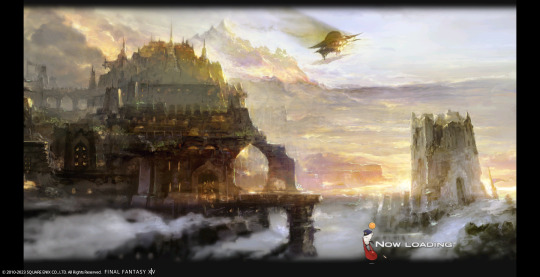
Logging into ffxiv and I see this art and I'm like "Where am I??? Where IS THIS???" I accidently logged out and left Loire at Zenos' grave for SEVERAL DAYS.
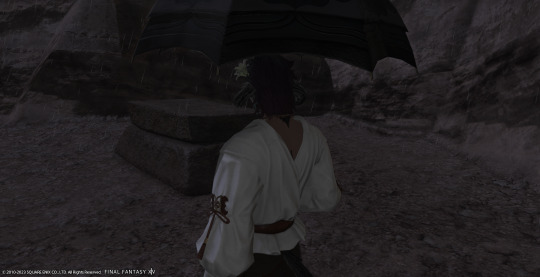
I came back and he's like this
Like are you okay, buddy???
#FFXIV#Loire Ejinn#Loire Lore#FF14#zenos yae galvus#zenos viator galvus#I forgot I was making a joke#you know#“it's a coffin there's a name engraved on it WH0RE--AND YOU'RE GOING IN IT”#but now this just looks like a dramatic gpose set like people do with Haurchie#I guess it's endwalker relevant#He does feel like this#So canon I guess#Never meant to make him so dramatic tho#He's got the black umbrella#the rain#I know this man was crying til I came back to move him around a bit I guess
28 notes
·
View notes
Text
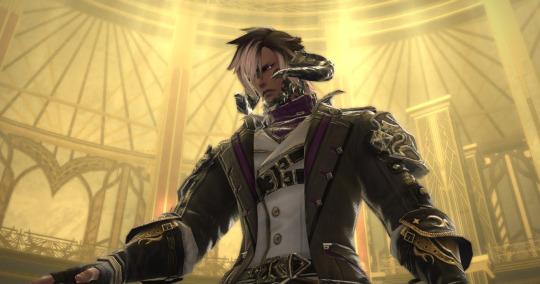
this isn't enough for you the words creep into your head in the dead of night one night and you cannot get rid of them. 'this isn't enough for me anymore'. you thought this was enough for you at some point, or maybe you hoped that it would be, but it isn't, and it hurts. you need to change something, or die trying. this - life like this - does not make life worth living. there is a lump in your throat that demands attention every waking moment of the day. there is pain in your body like a cavernous maw you cannot keep balance over. this is not what you wanted. you need to change. you can't stay here. it is not a character flaw you want more.
tagged by @shroudkeeper tagging: @yloiseconeillants | @wingedasarath | @goth-catte | @tokki-yue | & anyone else who wants to give it a go!
Link to the character quiz "why do you hurt" here!!
#mun thoughts#quiz#Loire ejinn#loire lore#thanks for tagging me!#Loire's voracious desire for adventure is probably what makes himself and Zenos mirror and reflection
3 notes
·
View notes
Photo

If you’re familiar with French fairy tale lore or feminist literary history, the name of author Henriette-Julie de Castelnau, Comtesse de Murat (1668-1716), may ring a bell. In 1702 she was arrested and banished to the Château de Loches, where she was placed under the stringent supervision of the king’s lieutenant for reasons that have been debated among scholars since the eighteenth century.
Until shortly before, she had been a celebrated presence in the highest eschelons of Paris and Versailles, with her writing earning international renown. Traditionally her exile has been attributed to Louis XIV and his entourage finding something libellous in her writings, but recent scholarship has shown that these theories don’t fit the timeline of events. Instead, documents from the late 1690s reveal allegations of disruptive conduct linked to refusing to conform with societal expectations placed on women. Above all, her bisexuality became the subject of public scandal-mongering and official reports. In her stories she was critical of arranged marriages—her own was unhappy and she attempted to separate from her husband—and she dedicated her memoir to the defense of women.
For a short but more precise and up-to-date biography than most, see The Teller's Tale: Lives of the Classic Fairy Tale Writers edited by Sophie Raynard. For a longer discussion of the Comtesse de Murat’s literary output see, for example, Allison Stedman’s introduction in A Trip to the Country, a translation of one of the Comtesse’s major works, Le Voyage de Campagne, a novel that experiments with the genre of ghost stories. It was first published in 1699.
Image: vintage railway travel poster (1928) advertising the medieval Château de Loches and other castles reachable by automobile from the company’s stations in the Loire Valley. Artwork by Constant Duval (1877-1956).
#châteaux castles mansions#france#fairy tales#lgbtq#17th century#books#french authors#women at work and play#miscellaneous art#louis XIV
21 notes
·
View notes
Text
Word Search Tag Game
Rules: In a new post use the words below (or choose your own) to find where they appear in your WIP/s and share those parts.
Tagged by - @summonerluna who gave me the words rough, yellow and glass
(@irishais tagged me too but I had none of your words in anything! Need to use charisma more in my writing, especially when talking about Laguna haha)
Tagging - @highlordofkrypton @quiettekiyet (in your comic, perhaps???) @siobhann and giving you the words longing, ocean and warm
Starting off with glass. Here's an excerpt of my ongoing timeloop fic Minute Hand. This is I think three "loops" (chapters) from the last one I published (20).
Rinoa pushed her way into Timber’s oldest bar, which was noisy and fragrant with hops. There was an empty table, but Rinoa ignored it and made a beeline for the dark-stained wooden counter and sat on a barstool. Squall took the one beside her and she waved at the man behind the counter to summon him to their end. The bartender, Squall already knew, wasn’t too concerned about their ages. “Ah, if it isn’t the Princess of the Forest Owls,” the mustached man teased. “Haha, very funny Fred,” Rinoa said, rolling her eyes. “Can you get us a round? And keep them coming. I’ve had a long day.” Squall was surprised when the man brought them not only a pint of beer each, but also shots of something clear. Rinoa lifted her shot glass and smiled ruefully. “A toast—thank Hyne this day is over.” He must have made some kind of face when she said it, because she shrugged and threw it back before he could respond. Then she took his shot, too.
And now, yellow. This is the beginning of an unpublished oneshot I will probably never finish, PaintNite 😂 Eh, maybe I will finish it, now that I've gotten some of my headcanons out... Maybe it lessened my impulse to shove lore into something that is supposed to be lighthearted...
“Selphie, I really appreciate this but…” Rinoa said as she pushed her finger under the seal of the envelope. “There’s no such thing as a 7-month dating anniversary. You really didn’t have to get me anything.” Selphie beamed. “You and Squall are two of my favorite people!” she exclaimed. “I just wanted to celebrate you! And look at the card! Isn’t it cute?” Rinoa pulled out the white piece of cardstock. In elegant cursive, shiny black debossed letters spelled out, “There’s been buzz about your love!” The text sat beneath two cartoonish and happy bumble bees, along with yellow loopy flight lines and tiny hearts. “Your bumble was meant to bee,” Rinoa read the inscription inside. “Okay, I have to admit, that is adorable.”
And rough. First off, looking for this word in my writing made me realize... I overuse "through" haha...
BUT! But, but, but!! This excerpt comes from my NEW yet unpublished multichapter project, where Laguna is working with a ghostwriter to write his autobiography. It's about Laguna's upbringing, his time in the army, his relationship with Raine, his work in Esthar... It's part headcanon with elements of the cut content of FFVIII. And it's scenes from Laguna's life interspersed with his first-person narrations - think The Princess Bride. The working title is The Luckiest Man in the World.
This excerpt, according to my (complete!) outline, is from Chapter 7, but I haven't written all the way to here yet. I was just really excited to think through Raine's life, so I wrote this chapter after writing the prologue haha
…And the next thing I remember is waking up in Winhill! “Wait… I thought you said you were stationed at the Centra Excavation Site. Isn’t Winhill on the Galbadian continent?” Oh, yeah, but it’s pretty much the closest place to Centra. Kiros and Ward kinda landed near the rocks, but I might have gotten caught in the surf or somethin’… Oh, is that a map? “Yes… President Loire, how long was your body out to sea?” Who knows! I know I was in pretty rough shape when I was found, I spent a couple of months barely conscious, a couple more recovering… What’s the face for? “I’m just surprised that… you survived.” Oh, yeah, it’s all Raine, really. She was amazing. She basically brought me back from the dead. “Well, okay… so you woke up in—” Wait, wait, wait, I gotta tell you about Raine, she’s really important! I think certain readers would prolly want to learn more about her, ya know? “But this is your autobiography…” Ahh, yeah, I know… Hey, I know we’re fallin’ a bit behind in the project and all, but like I said, she’s really important. I want her story somewhere, too. “Just… try to make it brief.”
5 notes
·
View notes
Text
Giving Cinderella Her Due: A Look At Cabernet Franc
New Post has been published on https://perfectirishgifts.com/giving-cinderella-her-due-a-look-at-cabernet-franc-2/
Giving Cinderella Her Due: A Look At Cabernet Franc
Tenute Argentiera’s iconic Ventaglio Cabernet Franc vineyard in Bolgheri
“Cab Franc is the ultimate Cinderella grape,” exclaims Leah Jørgensen, owner and winemaker of Jørgensen Cellars in Willamette Valley. “Historically, in Bordeaux, Cabernet Sauvignon and Merlot got all the attention, while Cab Franc was the one who did all the work. The truth is she’s the belle of the ball.”
While its hard to imagine the parent of Cabernet Sauvignon, Merlot, and Carménère being underappreciated, Cabernet Franc is often overlooked by wine lovers. Yet, it remains a secret weapon of wine makers. It’s time to start pay attention to Cabernet Franc.
As a blending grape, Cabernet Franc plays well with others. It delivers high acidity, smooth tannins, and notes of spice and herbs, making it more than capable of taking the lead in blends from Napa Valley and Bordeaux’s Right Bank, most notably in Château Cheval Blanc. Recently, it is making a name for itself as a single variety wine.
Cabernet Franc grape close up. Saumur, France
Uco Valley is home to Argentina’s top Malbec. However, Gualtallary, within the Tupungato GI, has an ace up its sleeve—Cabernet Franc. “The potential power of Cabernet Franc illustrated through our terroir is best expressed here,” shares Gonzalo Fernandez Gregorat, winemaker of Rutini Wines, who has been producing Cabernet Franc in the region for 20 years. Rodrigo Serrano, winemaker of Domaine Bousquet, attributes the wine’s soft expressions in the mouth to the region’s elevation and alluvial soil. In the hands of the region’s top producers, the grape transforms into the sexy elegance of the Argentine Tango.
Under the Tuscan Sun, Tenuta Argentiera’s Ventaglio Vineyard, on their Bolgheri estate, signals a new awakening for the property. Ventaglio, meaning fan, represents the winery’s cru, or best, vineyard. And, it’s all planted with one grape: Cabernet Franc. “Ventaglio is my heart and blood—the place I find a new beginning,” shares owner Stanislaus Turnauer. Produced in small amounts in the best vintages, Ventaglio represents the flagship of Argentiera’s portfolio, taking expectations and understanding of the grape to new heights—a Cru Super Tuscan comprised mainly of Cabernet Franc.
Napa Valley wineries such as Gamble Family Vineyards, Ehler’s Estate, and Cliff Lede Vineyards produce rich, robust expressions of Cabernet Franc. Chris Tynan, winemaker of Cliff Lede Vineyards, believes Napa hosts the ideal conditions for the grape to ripen “to perfection.”
Inspired by Right Bank Bordeaux, the Cliff Lede High Fidelity “spotlights the playful symbiosis of Cabernet Franc and Merlot, accentuating their individual layers of complexity.” Jason Lede, hospitality manager of Cliff Lede Vineyards “loves it for its plush, fruit-forward qualities.” Adding, “It’s approachable yet still has incredible concentration.”
Both Leah Jørgensen as well as Alison and Eric Smith Story, owners of Smith Story Wine Cellars in Anderson Valley, find their Cabernet Franc inspiration in France’s Loire Valley. And, both believe the trick to an exceptional glass starts in the vineyard.
To limit the grape’s natural “greenness,” Smith Story carefully monitors the grape, harvesting once a perfectly ripe mid-core is achieved. “Resulting in a vibrancy and a nice lift of acidity at the end is a truly magical sip found in our Smith Story Cabernet Franc,” shares Alison Smith Story.
Adding to this, Jørgensen maintains the timing of leaf removal and irrigation of the vine is key in limiting the wine’s greenness while it ripens. This allows the fruit to shine as the green notes become tertiary, creating a pleasant herbal expression. She also contends, in order to coax out the grape’s fruitiness, new oak should never be used in aging.
Jørgensen Cellars offers a variety of expressions of Southern Oregon Cabernet Franc.
Jørgensen sources her Cabernet Franc from Applegate and Rouge Valleys, areas of Southern Oregon containing limestone soil with ancient marine sediments similar to the Loire Valley. Crater View Ranch Vineyards, the source for some of her fruit and a vineyard she believes grows some of the best Cabernet Franc in the world, contains a high concentration of this soil. Because Loire Valley is revered for its expressions of the grape, these soil similarities offer Oregon growers guidance in cultivating the fruit.
Cabernet Franc’s acidity and tannin structure allows Jørgensen to craft a unique expression—a blanc wine, inspired by former Anne Amie winemaker Thomas Houseman’s L’Iris white Pinot Noir as well as Crémant de Loire sparkling wines. However, she is not making an arbitrary white wine from red grapes. Rather, building on the grape’s structure for intentional symmetry between the white and red wines.
Lori and Mike Budd, owners of Draceana Wines in Paso Robles, feel in love with Cabernet Franc at first taste many years ago. In 2013, the couple launched their own label with one wine. “After hunting California, we realized there was not a lot of Cab Franc out there. So, we decided to form our own niche with the foundation of the wine we really, really love,” explains Lori Budd.
Today they craft two styles. A classic multi-site clonal cuvee, and single site and clone reserve expression. “The reserve is mother nature in a glass,” shares Budd. “There are so many different expressions of the grape—there’s a Cab Franc for everyone,” believes Lori Budd.
Surprised a grape with Cabernet Franc’s pedigree did not have its own celebration day, Budd says the “Jersey girl in her” took up the charge to correct this oversight. In 2015, she single-handedly established December 4 as #CabFrancDay.
The date honors Cardinal Richelieu, who is credited with bringing cuttings of the grape to the Loire Valley in the 17th century. Lore holds he planted the vines at St Nicolas de Bourgueil where it grows to this day. From its humble beginnings, #CabFrancDay is now an international celebration.
While its increasingly easier to find wineries focusing on this grape, it remains underappreciated. “Cabernet Franc is an underdog—it needs to be fought for,” explains Budd. “It delivers so many different expressions. There is a Cab Franc out there for everybody.”
a selection of high-quality Cabernet Franc wines
2017 Cliff Lede Vineyards ‘High Fidelity’ Napa Valley ($95) is crafted of 48% Cabernet Franc, 43% Merlot and 9% Cabernet Sauvignon in a nod to both Right Bank Bordeaux and classic rock n’ roll, in a “Smoke On The Water” sort of way. Notes of black currant, fig jam, black pepper, smoked charcuterie, and fresh tobacco dazzle the senses. Concentrated yet approachable, with a crushed velvet mouth-feel and a long, mouth-watering finish.
2018 Domaine Bousquet GAIA Cabernet Franc Gualtallary Estate Vineyard Uco Valley ($30) represents the first time the wine is produced as 100% varietal. It offers soft aromas of bright fruit, mint, pepper, warm baking spice, and floral notes. Firm, gripping tannins contrast its fruit-forward juiciness and mid-palate minerality. Its broad on the palate with a lingering freshness.
2018 Jørgensen Cellars Mae’s Vineyard Blanc de Cabernet Franc Applegate Valley Oregon ($30) is a stunning wine. Layers of lemon, apricot, and apple are joined by fresh picked savory herbs, fresh white flowers and blossom, white tea, and trailing toasted hazelnuts leap from the glass. Complexity follows through on the palate with rich texture balanced by firm acidity, offering an elegance and mid-palate lift. This wine is a must.
2018 Jørgensen Cellars Cabernet Franc Southern Oregon ($25) follows in the footsteps of the Blanc in that it is layered and complex. Aromas of a dried bouquet leap from the glass of this flagship red wine, followed by delicate berries, warm spice, savory dried herbs, and trailing smoke. Vibrant best describes the palate, its fresh with lots of energy and lift. A steal for the price.
2016 Jørgensen Cellars ‘Clos Rouge Valley’ Reserve Cabernet Franc Southern Oregon ($50) falls to the opposite end of the spectrum, word descriptors do no justice in this distinction. Elegant layers of red floral notes (fresh and dried) mingle with tea, savory herbs, cocoa bitters, and black pepper, but more than the sum of its part, the flavors weave together like a tapestry. With a crushed velvet mouth-feel and linear focus, this medium-bodied wine begs for food.
2018 Ravine Cellars Cabernet Franc Finger Lakes New York ($21.95) is a bold single variety wine. Dark fruit, olive tapenade, dried herbs, fresh tobacco, and trailing pepper elicits the senses. Fine-grained tannins from large cask aging offer a smooth mouth-feel. A fruit-driven plate is juicy yet balanced with earthiness in a full-bodied wine with a long finish.
2016 Smith Story Cabernet Franc Sonoma Valley ($48) is a single variety wine intentionally crafted in an elegant, refined style. It offers bright notes of red and black fruit mingling with fresh herbs, violets, subtle spice, and black tea. The palate is fresh with nice lift and mouthwatering acidity. A food wine in a classic old-world style.
2015 Tenuta Argentiera Ventaglio Bolgheri IGT ($300) is the inaugural release. It is crafted of 85% Cabernet Franc and 15% Cabernet Sauvignon. This wine stands out for its cru quality: Lush, sultry, layered, complex, and structured. It’s robe of dark fruit, crushed flowers, dried herbs, warm spice, and a cedar, tobacco, mineral earthiness goes on for days on the palate. Long age-ability but hard to resist now.
2018 Zuccardi ‘Poligonos’ San Pablo Cabernet Franc ($30) is located in the center of Uco Valley, in the heart of Tunuyán, a region defined by its close proximity to the Andes Mountains. Winemaker Sebastián Zuccardi vinifies this wine in concrete vats with indigenous yeast. The resulting 100% Cabernet Franc is fresh and lively, with layers of blue and red fruit, dried herbs, and graphite. The palate exhibits tension between its smooth tannins and bold mountain nature, walking a tight-rope between new and old-world styles.
More from Spirits in Perfectirishgifts
0 notes
Note
What is your fondest memory from playing the games?
Final Fantasy Munday Meme:
So this story is going to start off messy. It was Valentines day. I’d just gotten stood up for the weekend. No forward warning, nothing. My roommate at the time had also gotten stood up so her man could go to a con. We still didn’t know each other super well but since we were roommates we went to the grocery store a lot together. With nothing else to do on that long weekend, we decided to go out and buy food.Instead of buying the groceries we wanted, we purchased two of the largest boxes of chocolate we could find, several liters of soda, chips, and flowers. (If you’re curious, I bought myself a red tea rose that I babied for 2 years straight before its horrible demise via open window). We sat on the floor of our room feeling bad and binging chocolate til I realized there was a sale on steam for FF7 and 8. I bought them both. Since I’d never played 8 before, I went straight into that and gifted her a copy as well. She’d never played Final Fantasy before. I was determined to change that.
Honestly, it was one of the best weekends of my life. We played FF8 without stopping. We consistently ate junk the entire 3 day weekend: pizza, takeout, the works. (it snowed, I think, so we had more time off). Once we both got to Laguna Loire, we were hooked. Laguna was everything. To this day, she and I would both drop everything if that man were to suddenly materialize and appear on our respective doorsteps. I know this as a fact.
The following week was spent digging into FF7 next–the entire lore–from SOLDIER to Jenova Reunion Theory to President ShinRa’s scandal sex life. I walked her through that game step by step. I explained everything I knew down to crazy intricate details that really weren’t necessary. I taught her how to win over Tifa and cackled with her when Cloud got in the bathtub at Honeybee Inn. We played Crisis Core and watched ACC and Last Order and Gackt’s Redemption video.
We covered the plot of two Final Fantasy games total in like–a little over a week or so. I’m super fond of the memory.
This girl, who I really barely knew and had no idea what Final Fantasy was, is quite possibly one of the few people who I know in my daily life that I can now break into her house and just stand in her living room and go, “Fuck Genesis” and she’ll come out of her kitchen to ask me what new thing I’ve realized and we can yell about it together.
0 notes